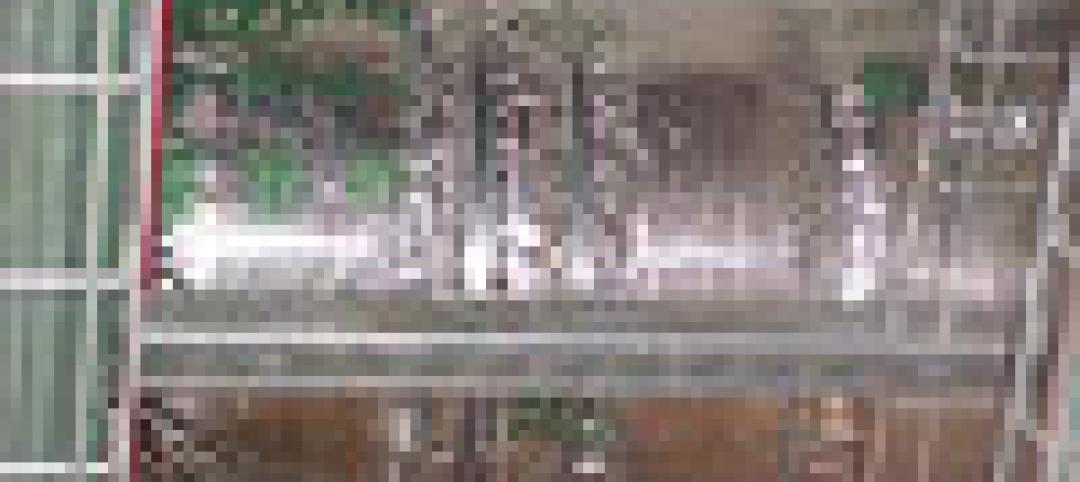For the past five years, Google has been running its own Healthy Materials program, which evaluates products for their potential health risks to employees.
That program worked fine when Google was just renting space and only had to worry about things like off gassing from furniture or paint. But when the search engine giant got into ground-up construction, “we were running into a lot of commodities” whose content wasn’t always transparent, says Drew Wenzel, Google’s campus design technical specialist. Consequently, the company wasn’t getting answers about products fast enough to make informed design, construction, and cost decisions.
“We tried to do this ourselves on one big project, and then asked ourselves if there was a better way,” says Wenzel.
That better way, he believes, is the Quartz Project, a year-long collaborative effort that Google entered into with Healthy Building Network, think step (a sustainable software provider), and Flux. Quartz Project is providing what it touts to be the AEC industry’s first free and open-source initiative that brings health and environmental information on 100 building products into a single database.
“Too many design decisions are still being made without the benefit of this information,” Drew tells BD+C. This database, he explains, allows designers and engineers to incorporate the data into existing analytical and design tools.
The Quartz Project launched its database at the VERGE 2015 conference in late October. Since then, “there’s been a lot of excitement in the AEC community” about the product, says Vivian Dien, a product manager for Flux and its Quartz Project Lead. The collaborative will be giving demos of its portal at Greenbuild in Washington D.C. next week.
This database offers product profiles for 100 commonly used building materials, from acoustical ceiling panels to XPS insulation. The information for each product includes its general composition, impurities, health profile (the product’s various health risks as a percentage of its total content weight), and environmental profile (such as Cradle-to-gate LCA results, end-of-life treatment, and so forth).
Dien says Healthy Building Network did an extensive scan of existing research and information to assemble this database. HBN was also charged with vetting the information.
The main value of this database, say Dien and Wenzel, is aggregating and standardizing product data into an open-source environment. They are quick to note, though, that the Quartz Project has avoided assigning specific health risks to individual products. “The risk portion needs to be carefully thought out,” says Wenzel. “We hope that software engineers will look at this database to develop tools that can integrate this information into a Revit model to have conversations early in the design process.”
They also see this database as a “benchmark,” which can be used to understand a product’s health baseline and to track improvements.
The Quartz Project is the industry’s latest effort to bring greater transparency to product content. Other prominent groups in this arena include the Health Product Declaration Collaborative, an open-standard format for reporting material content and potential health hazards; and The Cradle-to-Cradle Institute, with its five levels of certification for products as they travel a path to meet the organization’s criteria for material health, reutilization, renewable energy and carbon management, water stewardship, and social fairness.
Wenzel views those other sources as “predominantly” for products “that are unique or highly controlled.” Whereas the primary purpose of the Quartz Project’s database, he says, is as “an early-phase design tool.”
Related Stories
| Sep 12, 2011
Construction waste management
Best practices for an environmentally optimized job site.
| Sep 12, 2011
Morgan Thermal Ceramics’ system for installing grease duct enclosures achieves UL listing
Updated installation results in 33% space savings.
| Apr 12, 2011
Spray Foam Applications on the Rise
New uses for spray polyurethane foam enable Building Teams to achieve greater longevity and sustainability in their projects.
| Feb 15, 2011
New 2030 Challenge to include carbon footprint of building materials and products
Architecture 2030 has just broadened the scope of its 2030 Challenge, issuing an additional challenge regarding the climate impact of building products. The 2030 Challenge for Products aims to reduce the embodied carbon (meaning the carbon emissions equivalent) of building products 50% by 2030.
| Feb 3, 2011
Duro-Last Roofing, Inc. Adds Standing Seam Metal Product Line
Duro-Last Roofing, Inc. is adding a standing seam metal product line to its roofing system offerings. With five profiles and more than thirty colors to choose from, the new line will enable authorized Duro-Last contractors to provide a standing seam roofing installation to meet virtually any aesthetic requirements.
| Jan 19, 2011
Large-Scale Concrete Reconstruction Solid Thinking
Driven by both current economic conditions and sustainable building trends, Building Teams are looking more and more to retrofits and reconstruction as the most viable alternative to new construction. In that context, large-scale concrete restoration projects are playing an important role within this growing specialty.
| Jan 7, 2011
How Building Teams Choose Roofing Systems
A roofing survey emailed to a representative sample of BD+C’s subscriber list revealed such key findings as: Respondents named metal (56%) and EPDM (50%) as the roofing systems they (or their firms) employed most in projects. Also, new construction and retrofits were fairly evenly split among respondents’ roofing-related projects over the last couple of years.
| Jan 4, 2011
6 green building trends to watch in 2011
According to a report by New York-based JWT Intelligence, there are six key green building trends to watch in 2011, including: 3D printing, biomimicry, and more transparent and accurate green claims.
| Dec 17, 2010
Gemstone-inspired design earns India’s first LEED Gold for a hotel
The Park Hotel Hyderabad in Hyderabad, India, was designed by Skidmore, Owings & Merrill to combine inspirations from the region’s jewelry-making traditions with sustainable elements.














